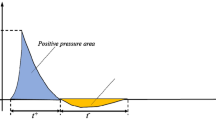Abstract
IT has been suggested that in low- and medium-velocity detonation in condensed explosives, propagation may be due to heating in the shock front of gas entrapped in the explosive1. The temperature in these gas pockets has been shown to be very high2, and the hypothesis is confirmed by the known effect of increase in gas pressure in stopping detonation in certain granular explosives1. The temperature attained in the gas depends on the compression ratio and the ratio of the specific heats of the gas, γ. If the hypothesis is correct, increase of γ should cause an increased temperature, and hence an increased rate of reaction, which should be manifested as an increase in the velocity of detonation of the explosive fired at cartridge diameters below that required for maximum velocity. We have now demonstrated this effect experimentally.
This is a preview of subscription content, access via your institution
Access options
Subscribe to this journal
Receive 51 print issues and online access
$199.00 per year
only $3.90 per issue
Buy this article
- Purchase on Springer Link
- Instant access to full article PDF
Prices may be subject to local taxes which are calculated during checkout
Similar content being viewed by others
References
Taylor, J., “Detonation in Condensed Explosives”, Chap. xi (Oxford, 1952).
Paterson, S., Fifth Symposium (International) on Combustion, New York, 672 (1955).
Author information
Authors and Affiliations
Rights and permissions
About this article
Cite this article
COTTRELL, T., GIBB, J. Importance of Gas Spaces in the Propagation of Detonation of Granular Explosives. Nature 178, 814–815 (1956). https://doi.org/10.1038/178814b0
Issue Date:
DOI: https://doi.org/10.1038/178814b0
Comments
By submitting a comment you agree to abide by our Terms and Community Guidelines. If you find something abusive or that does not comply with our terms or guidelines please flag it as inappropriate.



